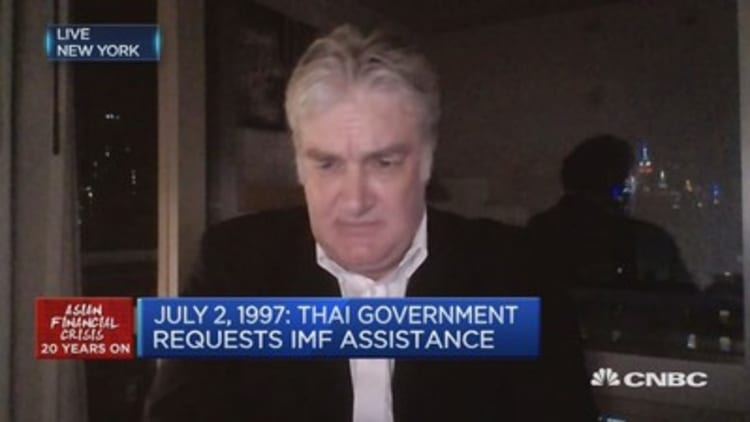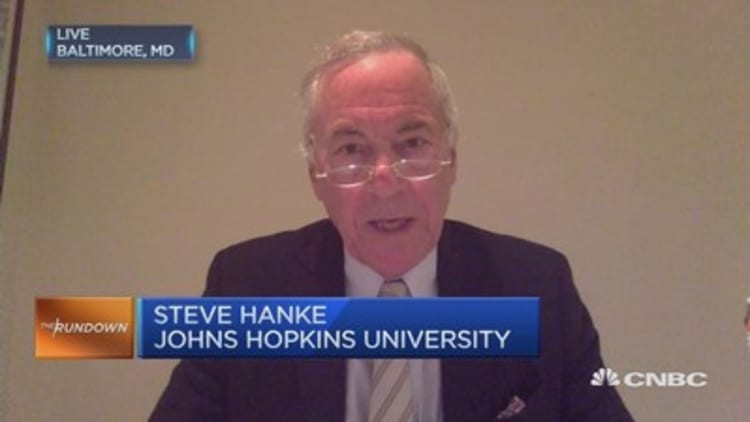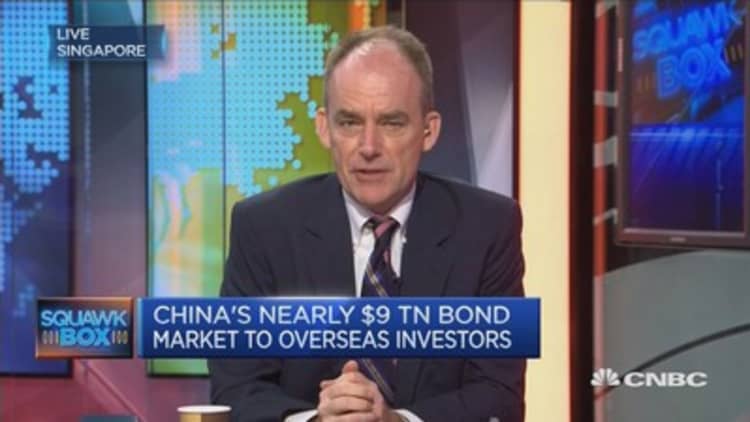
Financial systems in Asia have improved tremendously since the Asian Financial Crisis swept the region 20 years ago, but the world's second-largest economy, China, is presenting fresh risks, experts told CNBC on Monday.
The crisis was triggered by a devaluation of the Thai baht on July 1997, which sparked a contagion effect across the region.
Bangkok-based Paul Gambles, co-founder of investment advisory MBMG Group, said the root cause of the Asian Financial Crisis was the "American credit machine going into overdrive," and he added that the same phenomenon is happening in China right now as it faces a credit boom and a macroeconomic policy trilemma.
"What we learned in 1997 is (that) you can't control interest rates and FX rates and capital flows," Gambles told CNBC's "Street Signs" on Monday.
"If you want to have free market capital flows, you have to either let go the interest rates or let go the FX rates. China really doesn't seem to be learning that lesson at all, it wants to manage all three. The danger of repeat is in China right now," he said.

Although China is in possession of vast foreign exchange reserves, which rose to a seven-month high of $3.054 trillion in May, its debt levels are also high, Gambles noted.
"Reserves can disappear very, very quickly as we found out in Southeast Asia in 1996, 1997. The key is how much debt you have and nowhere has created as much debt as quickly as China in the last few years," he said.
A budding economy at the time, China was a "big help" then as the Chinese yuan was kept stable, S&P Global's Asia Pacific chief economist, Paul Gruenwald, told CNBC's "Squawk Box" on Monday.
That has now changed.
The was pegged to the dollar from 1994 until 2005 when pressure, from trade partners pushed the government to move to a managed peg. Recently, China's policymakers have struggled recently to implement changes to the currency, attempting to move from a dollar-peg to a trade-weighted basket.

"(China) was stable in that period of time in the late 1990s," agreed Professor Steve Hanke, applied economics professor at the Johns Hopkins University who was adviser to former Indonesian President Suharto during the crisis.
"Now, they have a system that is potentially vulnerable because they are managing the exchange rate and monetary policy simultaneously, and that's always potentially dangerous," he told CNBC's "The Rundown" on Monday.
Asian countries weathered the Global Financial Crisis of 2008-2009 "relatively well," said S&P's Gruenwald.
But he added, "if China gets into trouble, then I think it's a different ballgame."
Gambles was also concerned.
"Everything we are seeing in China today is Southeast Asia in 1995, 1996," said Gambles.
"You're looking at exactly the same situation but with much bigger numbers and, therefore, with far, far bigger impact than we saw in Asean in 97," he added.
Asean is the 10-member Association of Southeast Asian Nations.

